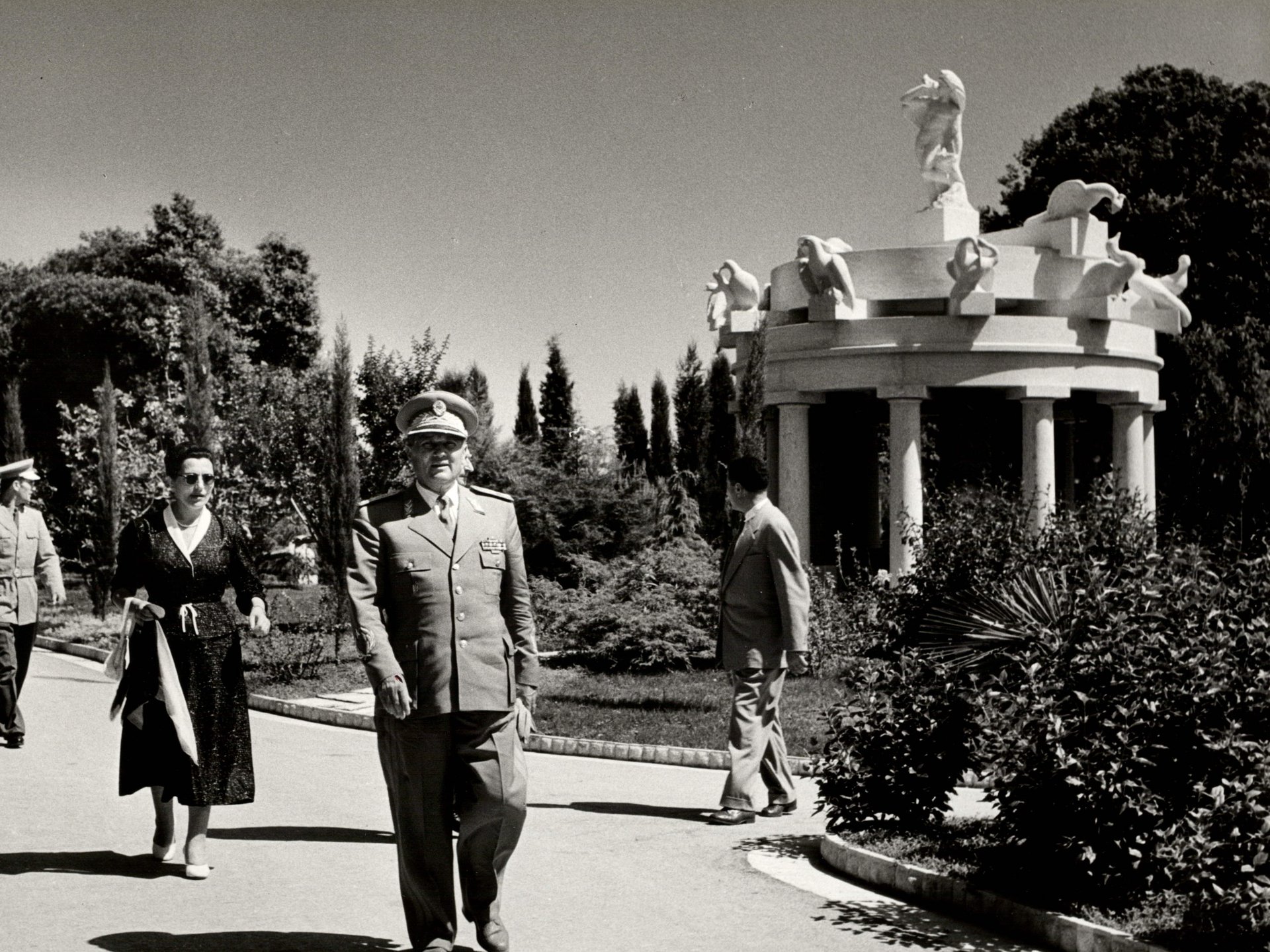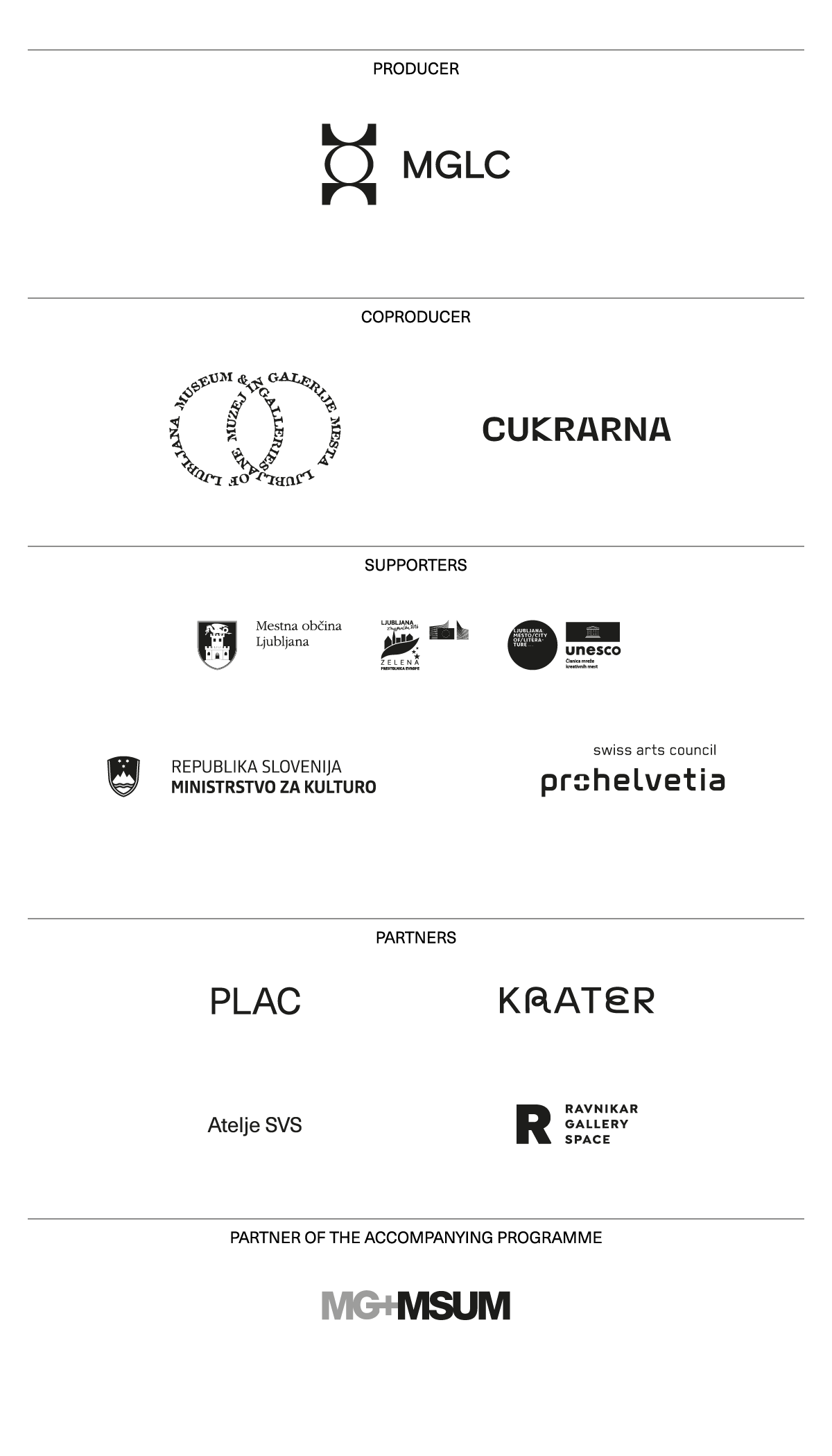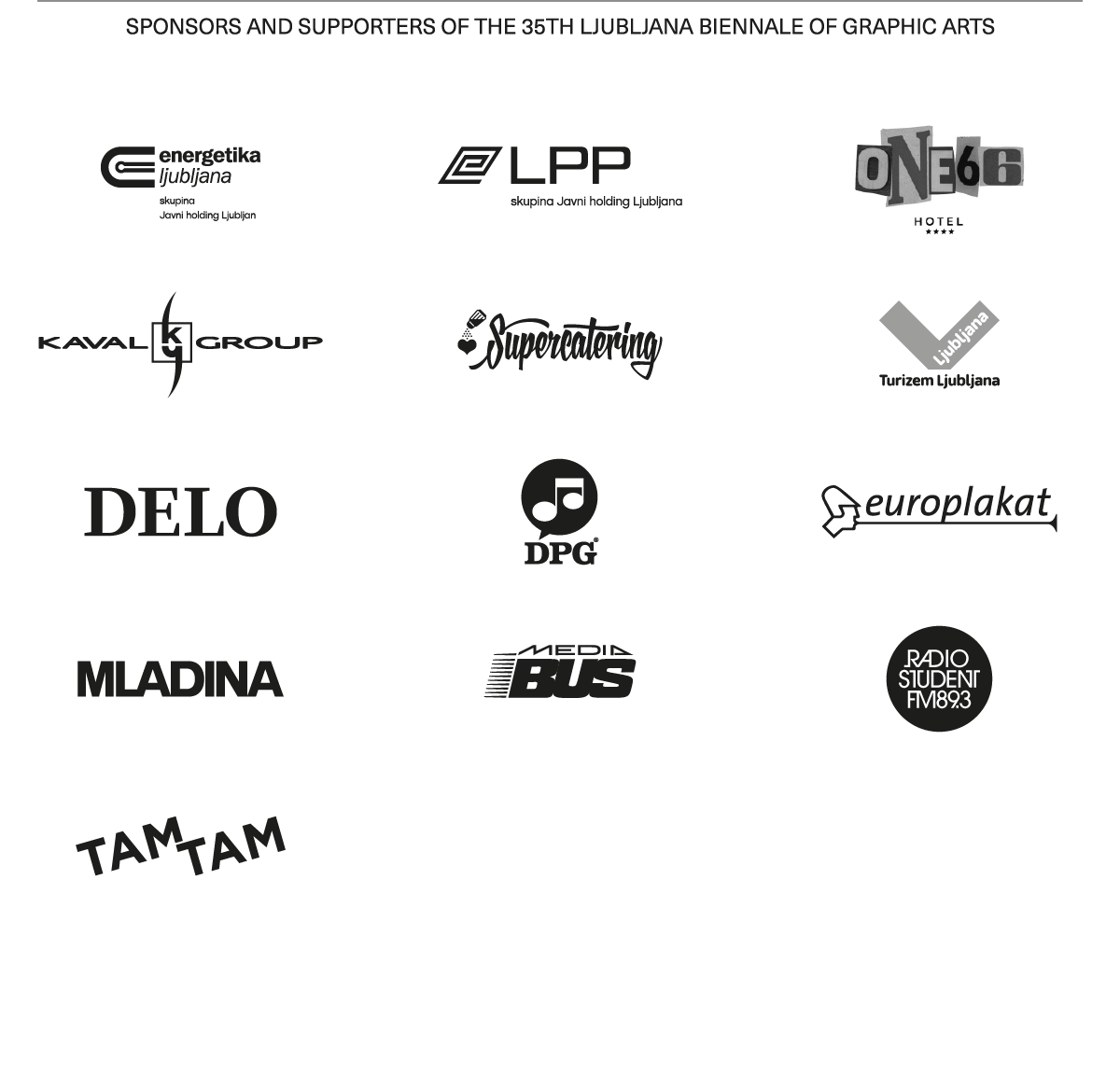The Print Portfolio of Artists of the 35th Ljubljana Biennale of Graphic Arts, The Holy Corner
Exhibition booklet THE HOLY CORNER
16. 11.–3. 12. 2023, Plečnik's Kiosk, Prešernov trg
The Ljubljana Biennale of Graphic Arts was founded in 1955 on the young model of exhibition format that was emerging at the time and becoming increasingly apparent in various parts of the world. The strong polarisation resulting from the antagonism of the two superpowers that dominated the world after the Second World War led not only to a process of global geopolitical reshaping but also to a change in the notion of collective consciousness that offered an alternative to the previous perception of the world. Despite its neutral stance and the absence of a colonial past, this international artistic manifestation, like its related versions, pursued specific ideological goals that went beyond a purely aesthetic experience.
Starting from a period of gradual transition, when the Socialist Federal Republic of Yugoslavia was evolving from the initially firm ally of the Soviet bloc to one of the main initiators of the Non-Aligned Movement, the Ljubljana Biennale of Graphic Arts was conceived as a platform to promote the principles of mutual respect, equality and coexistence that the emerging political current aspired to, by building new bridges of dialogue in the field of the graphic arts.
In the almost seventy years of its existence, the evolution of the Ljubljana Biennale of Graphic Arts has been characterised, in addition to the expanding aspects such as format and medium, by its ability to embrace the qualities usually attributed to print – experimentation, transformation and innovation – and to preserve the values of freedom, modernity, democracy and accessibility which founded its inception.
In the current global context, marked by the close examination of the consequences of colonialism, the analysis of the emancipatory processes of decolonisation and the restitution of historical memory, the art world too is striving to think beyond the parameters set by Western universalism and to help shape new forms of solidarity. The 35th Ljubljana Biennale of Graphic Arts, entitled From the void came gifts of the cosmos, follows the methodological approach of Ghanaian artist and Artistic Director of this year's Biennale, Ibrahim Mahama, to subvert the established narrative exercises of the exhibition format by interweaving, among other things, artistic practices with a decolonial approach, decentralised participation and the experience of collaboration, thus exploring the void, the central concept of the Biennale, as a potential space for the creation of new futures of collective emancipation.
In his original notes when coming up with ideas for a concept for this edition of the Biennale, Ibrahim Mahama illustrated the void with a drawing of a bed as an architectural form with an empty space underneath, but with the emphasis that this dark, mysterious, oneiric space under the bed can be understood as a space of potential; a space where the cycle of life begins and ends, a place where memories and dreams meet and where the ghosts of unrealised futures reside. An empty space from which something radically new could emerge through contemporary transformation. In many homes of diverse cultures, the holy corner is seen as a similar architectural element and is not necessarily tied to a particular religion, but is primarily intended for worship, spirituality or a connection to transcendence.
In line with Derrida's notion of the aporia of the gift, it would also be a place where the cosmos could be compensated for the gifts received. Although the demand for reciprocity insists on symbolic exchange (the recipient accepts the gift knowing that an equal or greater gift is expected in return), the value of the gift is not economic but social, and its main function would be to establish and maintain interpersonal relationships and social networks. The Print Portfolio of Artists of the 35th Ljubljana Biennale of Graphic Arts is entitled The Holy Corner and contains a selection of prints and multiples, which can be ascribed the status of a gift that symbolically manifests the explicit aspirations of the Biennale. After all, through their placement in the public space, they unveil to passers-by a reflection on new ideas, concepts and practices, as well as the meaning of the gift and its reciprocity.
Artists
Jihan El Tahri, Soghra Khurasani, Ibrahim Mahama, Tjaša Rener, Jaanus Samma, School of Mutants (Hamedine Kane, Stéphane Verlet-Bottéro), Janek Simon, Temitayo Ogunbiyi
Curator of the exhibition and author of the text
Yasmín Martín Vodopivec
About the exhibition venue
Plečnik's Kiosk at Ljubljana's main square, Prešernov trg, is one of three kiosks designed by the most prominent architect in Slovenian history. In 2021, selected works by Jože Plečnik in Ljubljana were inscribed on the UNESCO World Natural and Cultural Heritage List as an outstanding example of human centred urban design.
In July 1956, a meeting was held on the Brijuni Islands where Josip Broz Tito, Jawaharlal Nehru and Abdel Nasser, as heads of state of Yugoslavia, India and Egypt, signed the Brijuni Declaration, which called for peace, the spread of freedom and the abolition of the domination of one country over another. This was instrumental in establishing the Non-Aligned Movement. In the autumn of the same year, Jože Plečnik visited the Brijuni Islands to see his last completed project, the construction of a garden pavilion in the protocol area of President Josip Broz Tito's residence. Despite the architect's wishes and two organised attempts, the meeting between Plečnik and Tito never took place.
About the print portfolio
In the context of the history of the Ljubljana Biennale of Graphic Arts, the tradition of the print portfolio goes back at least to the early 1970s, when in 1971 a print portfolio of 15 Slovenian artists was published on the occasion of the 9th International Exhibition of Graphic Arts. In the following decades, print portfolios by local and foreign artists were also produced to coincide with biennial editions and later as part of MGLC activities. The current tradition of publishing portfolios to which the artists participating in the Biennale contribute their works dates back to 2017 when curator Tevž Logar conceived The Void print portfolio to accompany the 32nd Biennial of Graphic Arts. A portfolio was also published as part of the 33rd Biennial of Graphic Arts entitled Crack Up – Crack Down and was curated by the artist collective Slavs and Tatars.
Sources and bibliography
African Arts, blaxTARLINES, ed. Ruth Simbao and Kwaku Boafo Kissiedu, University of California, Volume 54, No. 2, Summer 2021.
Oliver Basciano, "What does the 'Global South' Even Mean?", ArtReview, 23. 8. 2023, https://artreview.com/what-does-the-global-south-even-mean/?fbclid=IwAR2mzCP1raajbS64FOw3RxCOutWKVP8Iwb -fEN6XXiiDrSdA-PMf7KRv9TM.
Azu Nwagbogu, "Ibrahim Mahama Builds Museums of the Future", ArtReview, 18. 5. 2022, https://artreview.com/ibrahim-mahama-builds-museums-of-the-future/.
Bojana Piškur, "Solidarnost", Moderna galerija Ljubljana, http://www.mg-lj.si/si/dogodki/2852/solidarnost-bojana-piskur/.
Bojana Piškur, "Non-Aligned Movement", Moderna galerija Ljubljana, https://glossary.mg-lj.si/referential-fields/commons-solidarity/non-aligned-movement.
Eric Repphun, "Anything in Exchange for the World: Jean Baudrillard, Jacques Derrida, and the Aqedah", The International Journal of Baudrillard Studies, Volume 7, No. 2, July 2010, https://baudrillardstudies.ubishops.ca/anything-in-exchange-for-the-world/.
Anita Afonu
Sadik Kwaish Alfraji
Yasmina Benabderrahmane
Assadour Bezdikian
Max Cegielski and Janek Simon
Virginia Chihota
Galle Winston Kofi Dawson
Nolan Oswald Dennis
Nabil Djedouani
(DNLM) Danilo Milovanović
Jihan El Tahri
El Warcha in dialogue with PLAC – Participatory Ljubljana Autonomus Zone
Beti Frim and Ines Sekač
Helga Griffiths
Christian Guerematchi
Eric Gyamfi
Sonia Kacem
Mohammad Omar Khalil and Abed Al Kadiri (in dialogue)
Soghra Khurasani
Kolektiv Krater / Krater Collective
Kvadratni meter / Square Meter
Lalitha Lajmi
Malle Leis
Silvi Liiva
Kagiso Patrick Mautloa
Raul Meel
Amina Menia
Yussif Musah
Medhat Nasr Ali
Ilona Németh
noks collective
Nonument Group
NPR.
Henry Obeng
Temitayo Ogunbiyi
Thierry Oussou
Krishna Reddy
Tjaša Rener
Martyna Rzepecka
Duba Sambolec
Jaanus Samma
School of Mutants (Hamedine Kane, Stéphane Verlet-Bottéro)
Mori Sikora
Aldona Skirutyte
Sanaz Sohrabi
Tejswini Narayan Sonawane
Selasi Awusi Sosu
Sreda v sredo (SVS)
Tracy Naa Koshie Thompson
Marje Üksine
Tõnis Vint
Ala Younis
Lara Žagar
Manca Žitnik
The Print Portfolio of Artists of the 35th Ljubljana Biennale of Graphic Arts, The Holy Corner
International Centre of Graphic Arts
Grad Tivoli, Pod turnom 3
SI-1000 Ljubljana, Slovenia
t: +386 (0)1 241 3800




